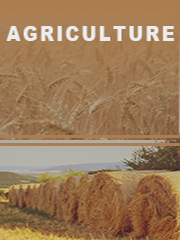TOP CATEGORY: Chemicals & Materials | Life Sciences | Banking & Finance | ICT Media

Download Report PDF Instantly
Report overview
The global Vertical Farming System market was valued at US$ million in 2022 and is projected to reach US$ million by 2029, at a CAGR of % during the forecast period. The influence of COVID-19 and the Russia-Ukraine War were considered while estimating market sizes.
Prime agricultural land can be scarce and expensive. With worldwide population growth, the demand for both more food and more land to grow food is ever increasing. One solution to our need for more space is vertical farming, involves growing crops in controlled Vegetable Cultivation environments, with precise light, nutrients, and temperatures. In vertical farming, growing plants are stacked in layers that may reach several stories tall.
This report aims to provide a comprehensive presentation of the global market for Vertical Farming System, with both quantitative and qualitative analysis, to help readers develop business/growth strategies, assess the market competitive situation, analyze their position in the current marketplace, and make informed business decisions regarding Vertical Farming System. This report contains market size and forecasts of Vertical Farming System in global, including the following market information:
Global Vertical Farming System Market Revenue, 2018-2023, 2024-2029, ($ millions)
Global Vertical Farming System Market Sales, 2018-2023, 2024-2029, (MT)
Global top five Vertical Farming System companies in 2022 (%)
The U.S. Market is Estimated at $ Million in 2022, While China is Forecast to Reach $ Million.
Hydroponics Segment to Reach $ Million by 2029, with a % CAGR in next six years.
The global key manufacturers of Vertical Farming System include AeroFarms, Gotham Greens, Plenty (Bright Farms), Lufa Farms, Beijing IEDA Protected Horticulture, Green Sense Farms, Garden Fresh Farms, Mirai and Sky Vegetables, etc. in 2022, the global top five players have a share approximately % in terms of revenue.
We surveyed the Vertical Farming System manufacturers, suppliers, distributors and industry experts on this industry, involving the sales, revenue, demand, price change, product type, recent development and plan, industry trends, drivers, challenges, obstacles, and potential risks.
Outline of Major Chapters:
Chapter 1: Introduces the definition of Vertical Farming System, market overview.
Chapter 2: Global Vertical Farming System market size in revenue and volume.
Chapter 3: Detailed analysis of Vertical Farming System manufacturers competitive landscape, price, sales and revenue market share, latest development plan, merger, and acquisition information, etc.
Chapter 4: Provides the analysis of various market segments by type, covering the market size and development potential of each market segment, to help readers find the blue ocean market in different market segments.
Chapter 5: Provides the analysis of various market segments by application, covering the market size and development potential of each market segment, to help readers find the blue ocean market in different downstream markets.
Chapter 6: Sales of Vertical Farming System in regional level and country level. It provides a quantitative analysis of the market size and development potential of each region and its main countries and introduces the market development, future development prospects, market space of each country in the world.
Chapter 7: Provides profiles of key players, introducing the basic situation of the main companies in the market in detail, including product sales, revenue, price, gross margin, product introduction, recent development, etc.
Chapter 8: Global Vertical Farming System capacity by region & country.
Chapter 9: Introduces the market dynamics, latest developments of the market, the driving factors and restrictive factors of the market, the challenges and risks faced by manufacturers in the industry, and the analysis of relevant policies in the industry.
Chapter 10: Analysis of industrial chain, including the upstream and downstream of the industry.
Chapter 11: The main points and conclusions of the report.